Results 2,561 to 2,570 of 12091
Thread: Anandtech News
-
01-14-13, 12:31 AM #2561
Anandtech: Intel Brings Core Down to 7W, Introduces a New Power Rating to Get There:
For all of modern Intel history, it has specified a TDP rating for all of its silicon. The TDP rating is given at a specific max core temperature (Tj_MAX) so that OEM chassis designers know how big to make their cases and what sort of cooling is necessary. Generally speaking, anything above 50W ends up in some form of a desktop (or all-in-one) while TDPs below 50W can go into notebooks. Below ~5W you can go into a tablet (think iPad/Nexus 10), and below 2W you can go into a smartphone. These are rough guidelines, and there are obviously exceptions.
 
With Haswell, Intel promised to deliver SKUs as low as 10W. That's not quite low enough to end up in an iPad, but it's clear where Intel is headed. In a brief statement at the end of last year, Intel announced that it would bring a small amount of 10W Ivy Bridge CPUs to market in advance of the Haswell launch. At IDF we got a teaser that Intel could hit 8W with Haswell, and given that both Haswell and Ivy Bridge are built at 22nm with relatively similar architectures it's not too far of a stretch to assume that Ivy Bridge could also hit a similar power target. Then came the CES announcement: Intel will deliver 7W Ivy Bridge SKUs starting this week. Then came the fine print: the 7W SKUs are rated at a 10W or 13W TDP, but 7W using Intel's Scenario Design Power (SDP) spec. Uh oh.
 
Let's first look at the new lineup. The table below includes both the new Y-series SKUs as well as the best 17W U-series SKUs:
 
 Low TDP Intel Core Processor Comparison   Pentium 2129Y Core i3-3229Y Core i5-3339Y Core i5-3439Y Core i5-3317U Core i7-3689Y Core i7-3517UE Nominal TDP 10W 13W 17W 13W 17W cTDP Down - 10W 13W 10W 13W SDP 7W - 7W - Cores/Threads 2/2 2/4 Base CPU Clock 1.1GHz 1.4GHz 1.5GHz 1.5GHz 1.7GHz 1.5GHz 1.7GHz 1C Turbo - - 2.0GHz 2.3GHz 2.6GHz 2.6GHz 2.8GHz 2C Turbo - - 1.8GHz 2.1GHz 2.4GHz 2.4GHz 2.6GHz L3 Cache Size 2MB 3MB 4MB GPU HD HD 4000 Base GPU Clock 350MHz Max GPU Clock 850MHz 1.05GHz 850MHz 1.1GHz Quick Sync No Yes AES-NI No Yes VT-d No Yes VT-x Yes Socket FCBGA-1023 Price $150 $250 $250 $250 $225 $362 $330
Compared to a similarly configured U-series part, moving to a Y-series/7W part usually costs you 200MHz in base clock, ~250MHz in max GPU clock, and 200 - 300MHz in max turbo frequency. Cache sizes, features and Hyper Threading are non-negotiable when going between U and Y. The lower clocks are likely the result of lower operating voltages and a side effect of the very low leakage binning. The cost of all of this? Around an extra $30 over a similar U-SKU. That doesn't sound like much but when you keep in mind that most competing ARM based SoCs sell for $30 themselves, it is a costly adder from an OEM's perspective.
 
Now the debate.
 
Intel should have undoubtedly been very specific about 7W being an SDP distinction, especially when the launch slide compared it to TDPs of other Intel parts. Of course Intel failed to do this, which brought on a lot of criticism. To understand how much of the criticism was warranted we need to first understand how Intel comes up with a processor's TDP and SDP ratings.
 
Intel determines a processor's TDP by running a few dozen workloads on the product and measuring thermal dissipation/power consumption. These workloads include individual applications, multitasking workloads (CPU + GPU for example) and synthetic measures that are more closely related to power viruses (e.g. specifically try to switch as many transistors in parallel as possible). The processor's thermal behavior in all of these workloads ends up determining its TDP at a given clock speed.
 
Scenario Design Power (SDP), on the other hand, is specific to Intel's Y-series SKUs. Here Intel takes a portion of a benchmark that stresses both the CPU and GPU (Intel wouldn't specify which one, my guess would be something 3DMark Vantage-like) and measures average power over a thermally significant period of time (like TDP, you're allowed to violate SDP so long as the average is within spec). Intel then compares its SDP rating to other, typical touch based workloads (think web browsing, email, gaming, video playback, multitasking, etc...) and makes sure that average power in those workloads is still below SDP. That's how a processor's SDP rating is born.
 
If you run a power virus or any of the more stressful TDP workloads on a Y-series part, it will dissipate 10W/13W. However, a well designed tablet will thermally manage the CPU down to a 7W average otherwise you'd likely end up with a device that's too hot to hold.
 
Intel's SDP ratings will only apply to Y-series parts, the rest of the product stack remains SDP-less. Although it debuted with Ivy Bridge, we will see the same SDP ratings applied to Haswell Y-series SKUs as well. Although Y-series parts will be used in tablets, there are going to be some ultra-thin Ultrabooks that use them as well. In a full blown notebook there's a much greater chance of a 7W SDP Ivy Bridge hitting 10W/13W, but once again the burden falls upon the OEM to properly manage thermals to deliver a good experience.
 
The best comparison I can make is to the data we saw in our last power comparison article. Samsung's Exynos 5 Dual (5250) generally saw power consumption below 4W, but during an unusually heavy workload we saw it jump up to nearly 8W. While Samsung (and the rest of the ARM partners) don't publicly specify a TDP, going by Intel's definition 4W would be the SoC's SDP while 8W would be its TDP if our benchmarks were the only ones used to determine those values.
 
Ultimately that's what matters most: how far Intel is away from being able to fit Core into an iPad or Nexus 10 style device. Assuming Intel will be able to get there with Ivy Bridge is a bit premature, and I'd probably say the same thing about Haswell. The move to 14nm should be good for up to a 30% reduction in power consumption, which could be what it takes. That's a fairly long time from now (Broadwell is looking like 2H-2014), and time during which ARM will continue to strengthen its position.
 

Acer's W700 refresh, with 7W SDP Ivy Bridge in tow 
As for whether or not 7W SDP parts will actually be any cooler running than conventional 10W/13W SKUs, they should be. They will run at lower voltages and are binned to be the lowest leakage parts at their target clock speeds. Acer has already announced a successor to its W700 tablet based on 7W SDP Ivy Bridge with a 20% thinner and 20% lighter chassis. The cooler running CPU likely has a lot to do with that. 
 
Then there's the question of whether or not a 7W SDP (or a future 5W SDP Haswell/Broadwell) Core processor would still outperform ARM's Cortex A15. If Intel can keep clocks up, I don't see why not. Intel promised 5x the performance of Tegra 3 with a 7W SDP Ivy Bridge CPU. Cortex A15 should be good for around 50% better performance than Cortex A9 at similar frequencies, so there's still a decent gap to make up.
 
At the end of the day, 7W SDP Ivy Bridge (and future parts) are good for the industry. Intel should have simply done a better (more transparent) job of introducing them.

More...
-
01-14-13, 02:30 AM #2562
Anandtech: CES 2013: Cases and Cooling in the New Year
I'm pleased to report that this year's visit to CES bore promising fruit for the new year of desktop PC cases along with cooling and even desktop machines in general. While the way notebooks and tablets will shake out over the next couple of years is at least somewhat difficult to pin down, the chassis and PC cooling industries produced very clear trends.
Much as when Jarred and I lauded the notebook industry for largely dispensing with glossy plastic (a practice HP has backslid on horribly with their G series and Pavilion notebooks), gaudy and ostentatious "gamer" cases are on the way out in favor of more staid and streamlined designs. Excepting Cougar's questionable Challenger case reviewed last year, most of the disconnect seems to stem from Taiwanese manufacturers and designers having a hard time trying to pin down western markets. That problem was largely absent from Rosewill, Thermaltake, and CoolerMaster's lines this year, though Enermax seems to be lagging behind.
When I visited with Enermax, they were showing off a few cases, but a consistent problem nagged them: two USB 2.0 ports, one USB 3.0. I asked why they were doing this, and they said dual USB 3.0 ports actually drove the cost up a couple of dollars. This is pretty reminiscent of the same attitude that's burying the non-Apple notebook industry (especially in the face of tablets), a misunderstanding that while western consumers are tight, they're not that tight.
Thankfully most of the rest of the case industry seems to have caught up with the step of progress. Thermaltake, once one of the biggest offenders, showed off their surprisingly elegant "Urban" series of silent enclosures destined to compete with NZXT's H2. Meanwhile, NZXT's new Phantom 630 is still on the ostentatious side, but only just so.
The biggest news for cases is that case design as a whole has progressed. Space behind the motherboard tray, and specifically channels for cabling, are pretty much standard now. What I was happy to see is USB 3.0 proliferating down to the sub-$70 market, using internal headers, and fan controllers everywhere. 140mm fan mounts are also becoming increasingly common, and the majority of manufacturers are trying to produce cases that can support 240mm radiators like Corsair's H100i.
Speaking of closed loop cooling, this is pretty much the big year for that technology to really take off. While NZXT and Corsair are still working off of designs that involve copper waterblocks and aluminum fins in the radiators, CoolerMaster's Eisberg line and Swiftech's new 240mm cooler all use copper fins in the radiators in addition to having beefier waterblocks and pumps. NZXT remains the only purveyor (extending from Asetek) of 140mm-derived radiators for the time being, but I don't expect that to last. Meanwhile, Zalman's liquid cooler doesn't use a conventional radiator at all, instead opting for a custom design reminiscent of their CPU heatsink designs. There were plenty of air coolers on display, too, but it's clear this is the direction things are going.
Finally, a brief word about boutiques. The last two years have suggested the boutiques and system integrators are beginning to seriously diverge, diversifying from each other primarily through offering custom chassis and notebook modifications. This year it was made plain by iBuyPower's aggressive retail push with their wholly custom Revolt and DigitalStorm's revised Bolt and Aventum II.
Every year someone proclaims the death of the desktop, and every year physics tells them what to go do with themselves. Powerful desktops and enthusiast machines are definitely getting smaller physically and more niche as a market, but desktops continue to offer the best longevity and bang for the buck of any personal computing platform. The PC gaming industry in particular has been tremendously revitalized, and while NVIDIA's GRID suggests a future of cloud gaming, it's still a ways off. In the meantime, 2013 should remain fairly bright for enthusiasts and do-it-yourself'ers.

More...
-
01-14-13, 03:00 AM #2563
Anandtech: Swiftech and Steiger Dynamics: German Engineering Comes Home
I don't know about you, but for me, the word "engineering" gets a lot more enticing when it's preceded by the word "German" (or the phrase "Commander LaForge, please report to.") Nanoxia, Swiftech, and Steiger Dynamics were all sharing a suite at CES this year, and while I've seen most of what Nanoxia has to offer with the Deep Silence 1, Swiftech and Steiger Dynamics were another thing entirely.
My meeting with Swiftech was brief and focused predominately on their new H220 closed-loop cooler. While they've offered watercooling kits of all types for a long time now, the H220 is targeted squarely at the market being served by Corsair's H100i, Thermaltake's Big Water 2.0 Extreme, and NZXT's Kraken X60. The H220 really screams quality, though, and you can tell Swiftech has been in the watercooling game for some time when you start examining the details.
Unlike most competing solutions, the H220's reservoir can be refilled, and the radiator uses brass tubing surrounded by copper fins (most closed-loop coolers sourced from Asetek or CoolIT rely on aluminum fins in the radiator). If you open the cooling loop (and Swiftech has designed the H220 for exactly that), the pump on the CPU waterblock is actually capable of handling the thermal load from an overclocked processor and two GeForce GTX 680s.
Swiftech had four comparison systems on display to show just how much better the H220 was than Thermaltake and Corsair's solutions, with each system employing a 240mm cooler from each company and the fourth with the H220's cooling loop including two GTX 680s. The H220 was able to either perform roughly 5C or so better than the competitors at comparable or lower noise levels. While I'm skeptical about the comparison systems (no two i7-3770Ks overclock exactly the same), I'm still pretty confident the H220 will be a force to be reckoned with.
Swiftech's H220 will be retailing with an MSRP of $139.
Meanwhile, Ganesh was gracious enough to coordinate a meeting between me and freshly minted system integrator Steiger Dynamics. Steiger Dynamics has one product, but it's a doozy: the LEET. While the name may not excite you, the product ought to at least pique your interest.
The LEET is essentially a custom desktop designed to be a media center, and specifically, a gaming machine. While comparable products like the DigitalStorm Bolt, the iBuyPower Revolt, and Alienware's X51 all look more like gaming consoles and were designed to see just how much power could be crammed within a specific envelope, the LEET goes in the opposite direction. Steiger Dynamics has produced something that looks like a home theater appliance, and within the enclosure is a custom liquid cooling loop (produced with Swiftech's aid, naturally) capable of supporting an Intel Sandy Bridge-E hexa-core Core i7 along with dual GeForce GTX 690s.
Where this product proves itself, though, is in how silently it runs. While pushing the CPU and graphics hardware at full bore (we're talking Prime95 plus FurMark) will produce an audible increase in noise, in gaming the LEET is essentially silent. I tried Crysis 2 and Far Cry 3, both at their maximum 1080p settings, and I didn't hear a peep from the system on display.
Steiger is still small, but they have a very attractive product. The price is going to put it out of reach for a lot of users (it starts at a not inconsiderable $1,798), but for those that can afford it, it's going to be a very impressive machine. This isn't something that can be easily built off of the shelf, and it shows. Expect to hear more from Steiger Dynamics in the future.

More...
-
01-14-13, 05:30 AM #2564
Anandtech: IOGear Demonstrates HDMI Switching Solutions at CES 2013
We visited IOGear's booth at CES and saw a variety of devices including HDMI switching solutions, I/O devices and other A/V gear. This post covers the HDMI switching solutions alone. There were two products which stood out in the demo. The first one was targeted towards home consumers. IOGear touts this as the first wireless streaming matrix for home use. It has 5 HDMI inputs and 2 HDMI outputs. One of the HDMI outputs is hardwired, while the second is wireless. A wireless receiver is bundled with the unit and can be placed up to 100 ft away (across walls). This wireless technology is based on WHDMI (5 GHz technology). The input for the wireless HDMI output can be configured from the second room. This device can also be used to clone HDMI outputs across two different locations. The device supports 3D over HDMI up to 1080p24.
The device does blank out the relevant output while switching, but that shouldn't be a factor in home usage scenarios. The Wireless 5x2 HD matrix (GWHDMS52) will ship in Spring for $400.
On the other hand, IOGear also has a rackmount 4x4 switcher meant for custom installers and the professional crowd. There is zero-delay switching without output blanking for this model. It can be controlled using the front panel, IR remote or RS-232 for professional applications. The AVIOR GHMS8044 is priced online around $700 (MSRP is $820).
 
IOGear also had some high capacity mobile battery chargers on display (up to 11000 mAh) and a Realtek-based WiDi / Miracast sink on display. The GWAVR WiDi / Miracast sink will debut at a MSRP of $80.

More...
-
01-14-13, 07:30 AM #2565
Anandtech: Seagate and LaCie Demonstrate Complementary Product Lineups at CES 2013
Seagate is well on its way to complete the acquisition of LaCie, and the two companies had a joint presence at CES 2013. For the most part, the companies have complementary lineups. There are two areas of overlap, namely, the external hard drive space and the entry-level business NAS systems and network attached hard disks. In the former space, LaCie differentiates by providing different aesthetics to the case itself. In the latter space, the differentiation is almost non-existent. In particular, both the LaCie 2big NAS and the Seagate BlackArmor NAS 220 serve the same market segment and have similar performance. It will be interesting to observe how LaCie and Seagate consolidate their budget business NAS offerings.
Seagate Wireless Plus:
The most important announcement from Seagate was the Wireless Plus portable hard drive. This is a follow-up product to the Seagate GoFlex Satellite that was reviewed in late 2011. Seagate claims to have increased the battery life by better optimizing the drive up time depending on the content being streamed. The included battery is good for up to 10 hours of video playback according to Seagate.
Gallery: Seagate Wireless Plus Mobile Storage




iOS and Android apps are available to interface with the wireless drive and access the content. In our hands-on testing, we found the Android app to perform way worse than the iOS app with respect to speed and ease of use. The STCK1000100 1 TB version is available for pre-order at a price point of $200. LaCie doesn't have any similar product in their line-up.
Seagate Central:
The Seagate Central is a network attached hard disk with a very pleasing industrial design. The unit is based on a Cavium chipset (ARM-based) and has a single GbE port as well as a USB port in a recessed nook. We voiced our concerns about the placement of the USB port (too close to the network jack, and also lacking clearance against the recessed wall). In terms of products in the same category, Seagate is pitting this against the Western Digital MyBook Live and the Iomega single bay network attached hard disk. The plus points of the Seagate Central include a Samsung SmartTV app to access the content, as well as Android and iOS apps which replicate the functionality seen in the Wireless Plus's apps. The issues we pointed out with the Android app in the Wireless Plus remain in the Seagate Central too.
Gallery: Seagate Central Network Attached Hard Disk




The product will ship in March with a MSRP of $190, $220 and $260 for the 2TB, 3TB and 4TB versions respectively. LaCie has a network attached hard disk in the LaCie CloudBox as well as the LaCie d2 Network 2, though they aim at a different segment of the network attached hard disk market.
LaCie 5big NAS Pro:
This is a 5-bay NAS based on the Intel Atom D2700 platform meant as a performance offering in the SMB NAS market. We were able to present some thoughts with a beta unit just prior to CES. Do head on to the first part of our review for more information about the 5big NAS Pro.
LaCie 5big Thunderbolt:
Unless hard disks are placed in a RAID configuration, they are unable to saturate Thunderbolt links. LaCie introduced the 5big Thunderbolt, which can deliver up to 785 MBps of throughput. There are two Thunderbolt ports for daisy chaining support.
Gallery: LaCie 5big Thunderbolt RAID Array





The pricing of the diskless version starts at $1200.
LaCie Blade Runner:
We have had Neil Poulton-designed external HDDs from LaCie before, and now, they have introduced the Blade Runner, designed by Philippe Starck. The design of the enclosure is hard to describe, so we will let the gallery below do the talking.
Gallery: LaCie Blade Runner Limited Edition External Hard Disk




The 4 TB Blade Runner has a USB 3.0 interface. It is in a limited edition run of 10K units and has a MSRP of $300.
Seagate also briefed us under NDA on some exciting announcements scheduled for the next two quarters, along with some demonstrations. Stay tuned for more Seagate / LaCie coverage in the near future.

More...
-
01-14-13, 09:30 AM #2566
Anandtech: Interacting with HTPCs: Adesso, IOGear & Rapoo Demonstrate Options at CES
Media Center remotes are a dime a dozen, but, judging by the threads which frequently pop up on AVSForum, it appears as if full-sized keyboards are preferred by a number of users. Some of the popular options for controlling HTPCs include the diminutive Logitech diNovo Mini and the Lenovo N5902 keyboard / 'trackball' combo. The Logitech K400 with an integrated touchpad is also quite good and economical (and my personal HTPC solution for now), but it isn't really ideal as an extended alternative for a mouse. At CES, we went around the show floor looking for HTPC control solutions. In particular, we paid attention to the full size offerings. A separate mouse is out of the question in a HTPC setup, and mostly, we were bundled with either a touchpad or a trackball. The wireless communication happened in either the 5 GHz or 2.4 GHz band with a specialized USB receiver on the PC side. In some cases, the communication protocol of choice was Bluetooth. Communication devices using Bluetooth can also interface with tablets supporting Bluetooth.
Adesso:
Adesso had the yet-to-be-launched WKB-4150DW Bluetooth 3.0 aluminum touchpad keyboard on display. It is mainly intended to interface with tablets, but the build and features make it an ideal HTPC companion. The differentiating feature of this product is the option to use either 2.4 GHz (with a dedicated USB receiver) or Bluetooth for communication using a switch at the rear of the unit.
Gallery: Adesso WKB-415DW
Older keyboard / trackpad / trackball combo models were also on display.
Gallery: Miscellaneous Adesso Keyboard / Trackpad / Touchpad / Trackball Combos
IOGear:
IOGear wasn't introducing any new keyboard / mouse combos, but they had their full lineup on display. The GKM571R appeared to be quite interesting given its minimalist design. The unit even turns off completely when the upper lid is closed. The on-lap keyboard with optical trackball and scroll-wheel, GKM581R, in addition to being an ergonomic alternative for HTPCs, is also compatible with multiple game consoles (including the PS3). The GKM681R retains the same compatibility of the GKM581R, but in a compact form factor, without the on-lap ergonomic design. The GKM561R has a laser trackball for 400, 800 or 1200 dpi settings. The unit is MCE-ready with appropriate shortcuts and also retains the game console compatibility of the previous two models.
Rapoo:
Rapoo had a variety of Windows 8 peripherals on display. Of interest to the HTPC crowd were the wireless multimedia touchpad keyboard (E9180P) and the wireless illuminated keyboard with touchpad (E9090P). Both of these communicate in the 5 GHz spectrum, avoiding interference with Wi-Fi, Bluetooth and other 2.4 GHz devices. There is support for customizable touch gestures for personalizing the navigation experience. The latter features inductive wireless charging and the backlight is adjustable.
Gallery: Rapoo Windows 8 Peripherals for HTPCs
We are looking forward to having some of these models over for review towards the end of this quarter.

More...
-
01-14-13, 10:30 AM #2567
Anandtech: Acer Shows Off 2880x1620 Panel
We visited with Acer at this CES, and they didn't specifically have anything that we were told we could discuss, but after seeing another publication with pictures of Acer's pre-release 2880x1620 IPS display laptop it appears that's fair game. So, let me tell you what we know.
The panel as noted is 2880x1620, with a diagonal of around 15.6" (give or take 0.1" I'd guess). This is basically the non-Apple version of the QWXGA+ display, only in 16:9 attire rather than 16:10. The display is clearly IPS or some other wide viewing angle design, and when we walked into Acer's suite to look at the laptops and tablets, from an oblique angle it stood out as far and away the best display of the bunch. I also took some time to show the same image (wallpaper) on the 2880 panel alongside adjacent 1366x768 and 1080p panels (both TN), and the difference in color was astounding.
My best guess for when we'll see this LCD show up in an Acer laptop (and potentially in laptops from other vendors) is around late Q2 2013, when the Haswell launch occurs. That should give the OEMs plenty of time to figure out how they're going to deal with an ultra-high-DPI panel in Windows, and that's where Apple's control over both the hardware and the OS is going to be difficult to beat. Hopefully when the display shows up, manufacturers will also remember to spend the extra time and money to pre-calibrate for accurate colors, and it sounds like that's at least in the cards.

More...
-
01-14-13, 11:30 AM #2568
Anandtech: Buffalo Technologies Updates NAS and DAS Lineup at CES 2013
Brian already updated readers on the new products from Buffalo in the networking and Thunderbolt space. There were updates on the NAS front too. The primary announcement was the launch of the LinkStation 400 series of NAS devices. The available models include single and dual bay configurations with the option of going diskless (410D / 420D / 421E). These NAS devices also incorporate support for the BuffaloLink remote service and new mobile apps. The chassis has a black matte finish. Buffalo claims support for 80 MBps+ in throughput performance. Pricing ranges from $149 for the 421E to to $719 for a 8TB 420D. Availability is slated for end of Q1 2013.
Gallery: Buffalo Technologies - LinkStation Refresh and DriveStation DDR


The BuffaloLink service enables secure cloud access to the NAS. It consolidates various NAS devices under one account and provides easy remote access. The service works via relay mechanism and doesn't require any port forwarding. Buffalo maintains servers in US, Europe and Asia for this purpose. The service is available free for the life of the product. Plans are also underway to expand BuffaloLink to include other products such as routers.
The DriveStation DDR is a USB 3.0 DAS (Direct Attached Storage) unit with a 1 GB DDR3 cache. This is in addition to the 32 - 64 MB cache already present in the hard disk. This DRAM allows caching of writes to the hard disk. This makes it appear to the user that the writes to the DAS are quite fast (as much as 350% rise in some cases). Of course, there is no protection against power loss. Users have to be extremely careful in ensuring that the DriveStation DDR is connected to a UPS in case critical data is being transferred to it. Pricing ranges from $119 for a 1TB version to $189 for a 3TB version. Availability is scheduled for end of Q1 2013.
Head on over to the source link for more specifics on the products launched.
 

More...
-
01-14-13, 01:30 PM #2569
Anandtech: G.hn and HomePlug Head for Showdown
It has been a while since we covered PLC (powerline communication) technology here, but we took the opportunity to check up on the latest and greatest in the area at CES. G.hn has been championed by the HomeGrid forum and the companies promoting them in early 2011 included Sigma Designs, Lantiq and Marvell. In fact, at CES 2011, we visited the Sigma Designs suite to see G.hn silicon in action for the first time. Lantiq had also demonstrated a G.hn chipset at the same show. Much water has flown under the bridge since then, and Lantiq seems to have quietly dropped off advertising their XWAY HNX solutions on their website. Sigma Designs is financially not doing too well, and Michael Weissman, one of their most vocal G.hn proponents, has moved on. These factors, however, didn't prevent them from introducing their 2nd generation G.hn chipset (PDF). There has been a change of PR hands at Sigma Designs, and we were unfortunately not invited to see it in action. However, Marvell was gracious enough to invite us to check out their G.hn system in action.
Meanwhile, HomePlug invited us to check out a compatibility test using commercially available HPAV (HomePLug AV) equipment. Qualcomm Atheros is no longer the sole vendor, with Broadcom and M-Star also pitching in with their own solutions. The Broadcom solution with the integrated AFE (Analog Front End) has been well received by the vendors. HomeGrid forum regularly organizes plugfests too, but they are of little relevance if one can't purchase the involved equipment in the stores.
It is good to see G.hn silicon in what appears to be ready-to-ship casing, but the bigger question is one of compatibility with existing equipment. Marvell indicated that service providers are lining up to supply G.hn equipment to customers (particularly in the growing Asian markets). However, with HPAV equipment already well spread throughout the world (particularly through consumer channels), it remains to be seen if service providers can take the risk of their equipment performance degrade in a MDU (multiple dwelling unit) scenario where the adjoining units have HPAV equipment. Marvell does promise good network isolation in the MDU case, and it will be interesting to see how a HPAV network and G.hn network can co-exist.
The progress with G.hn seems to be very slow. It is a pity that silicon demonstrated as early as January 2011 is yet to ship to customers two years down the line. Under conditions of anonymity, some of the networking vendors told us that they have given up on G.hn and are looking forward to HPAV2 silicon coming out towards the end of the year. The HomeGrid forum and its members have been quick to publicize any service provider / supplier agreements, and till now, we have received reports of Comtrend, Suttle, Chunghwa Telecom Labs and Motorola Mobility showing interest in G.hn. As long as Sigma Designs and Marvell remain in the fray, G.hn lives to fight another day. We will be keeping close tabs to find out when the first G.hn products start shipping to the customers of the service providers who have opted for it.
 

More...
-
01-14-13, 02:00 PM #2570
Anandtech: Razer Edge: Impressions and Thoughts
I spent a fair amount of time at CES playing with the Razer Edge, mostly because it was one of the more intriguing new products on the show floor. (Shield was another one, but Nvidia sadly kept it in a glass cage.) As recapped in our announcement post, it’s a 10.1” tablet that packs an ultra-low voltage Ivy Bridge CPU and an Nvidia GT 640M dGPU and comes with a gamepad accessory that turns it into the world’s largest GameBoy Advance. This, for a tablet, is a ridiculous amount of power. I’ve always been someone who appreciates insanity in mobile technology design, and the insanity of a 45W power envelope in a 10” form factor is something that I respect. 
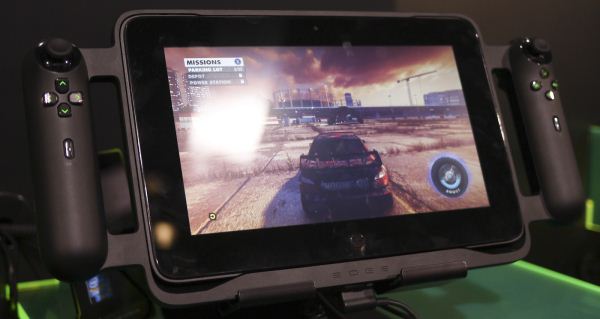
The Edge on its own is pretty intense - 0.8” is really thick for a tablet, with a general sense of chunkiness that starkly contrasts the extremely svelte Blade. The intake and exhaust vents are put to the test in any extended gaming, and one of the units on the show floor that had been continuously running Dirt 3 for the previous few hours was....warm. It’ll be hard to tell how close to thermal equilibrium the Edge gets until we get one in our labs, but I expect it to throttle significantly at some point. 
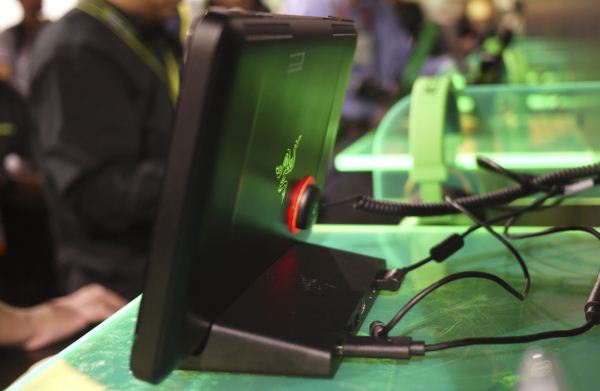
17W Core i5 and i7 parts were chosen instead of the new 7W Y-series CPUs due to the higher clock speeds and better turbo capabilities of the U-series processors. The SSD has not yet been finalized, with different drives in all the prototypes that I played with. The display panel is in fact an IPS panel, which my announcement post was mistaken about (I was misinformed initially during the CES pre-briefing, but Razer’s engineering team corrected me). It looks pretty decent, and the capacitive touch panel was pretty responsive. The 1366x768 resolution matches up with most of the other 10.1” Windows tablets we’ve seen, and was likely chosen in lieu of 1080p so that the GT 640M LE could comfortably game at native resolution. 
There’s a 40Wh battery on board, with an extended 40Wh extended battery that fits in the gamepad and notebook docks. (It’s a 14.8V 2800 mAh battery, for an exact capacity of 41.44 Wh). 80Wh is a ton of battery for a device this small, but when stressed, it’ll go quickly. A rough estimate of the internal components gives us a basic estimate of 40W power draw (17W CPU, 22W dGPU, in most gaming situations figure a 50% load on CPU and 100% load on GPU, add about 10W for display, wireless and other miscellaneous stuff) and we’re sitting at an hour of gaming on the internal battery and 2 hours with the extended pack. Obviously, turning down settings to reduce system load, brightness, and the intensiveness of the game being played will affect these figures - Razer quotes a range of 2-4 hours of mobile gameplay. Normal battery life should be in the 3-5 hour range on the internal battery and about double that with the extended pack. 
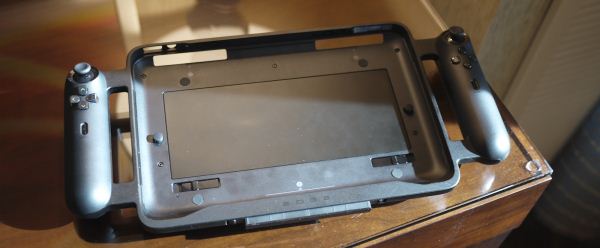
The gamepad controller essentially works like an Xbox controller, with intuitive controls and built-in force feedback. It’s pretty cool, I feel like it’s something I would have absolutely killed for when I rode the bus to school every day back in my early undergrad days. The tablet clips into the gamepad, which essentially envelops the tablet like a case, and then you’re off. I spent my fair share of time playing Dirt on it, and it was just great. Control layout is identical to the 360, and the analogs and triggers are responsive. Razer definitely knows how to put a good 360 controller together, as evidenced by the Sabertooth, so this came as no real surprise. The setup adds a bit of heft to the tablet, to the tune of roughly 3.25 pounds, but for the amount of mobile gaming potential it brings, I’d say it’s a relatively small loss. The only downer was the $249 price point on the accessory.
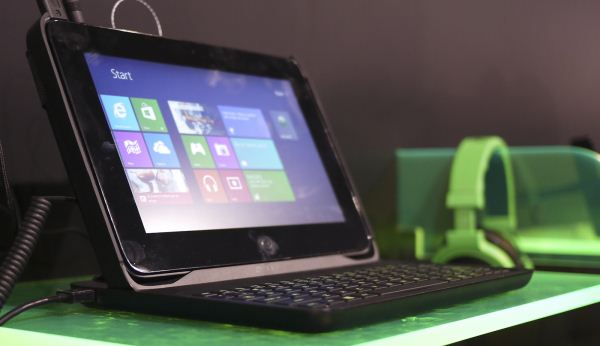
The keyboard dock, on the other hand, was kind of a disappointment. It’s definitely a work in progress and isn’t expected to ship until Q3 (the gamepad and docking station will ship alongside the Edge in Q1), but it’s a clunky piece of kit with a currently not-very-good keyboard and a pretty unrefined hinge/latch design. I’ll chalk the flex down to the handbuilt state of the prototypes but the key sizing is way too small - instead of going edge to edge like most netbooks, there’s a border left around the keyboard that results in tiny keys. The keys absolutely need to be bigger for any semblance of a decent typing experience. There’s a lot of improvement that can be done here; I suggest the design team pick up a Transformer laptop dock or a late-model Eee PC and borrow liberally from that keyboard design. ASUS has absolutely perfected the 10.1” keyboard, so it’s not a bad idea. I’m not going to rake Razer over the coals on a product that clearly isn’t anywhere near finished yet though, so let’s move on.
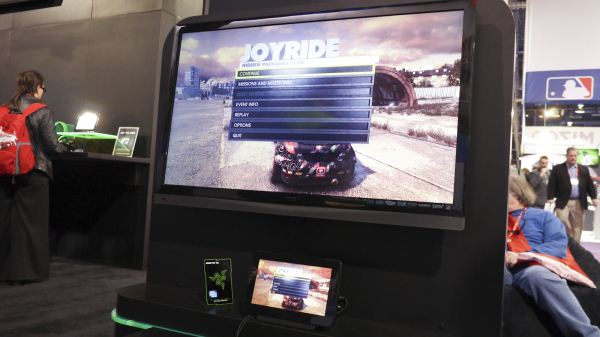
The docking station was set up with an LCD TV and a pair of Sabertooth controllers in multiple places in the Razer CES booth, as well as their meeting suite. In all cases, the display was set to be mirrored, presumably to ensure that the games were played at the internal panel’s native 768p and not 1080p (where performance would understandably struggle). I’m still really interested in tossing an Edge + dock on my desk with a 24” display and a Bluetooth keyboard/mouse, it seems like one of the more viable 2 pound desktop replacements around. 
Gallery: Razer Edge Hands-On





Pricing slots in at $999 for the base i5/4GB/64GB model, $1299 for the i7/8GB/128GB Pro model, and $1499 for the Pro plus Gamepad bundle. Doubling capacity to 256GB will run you an extra $150 for the Pro models. If you don’t want anything other than the tablet, the base model is a pretty good deal, but once you start adding accessories you might as well spring for the Pro bundle and resign yourself to paying Razer’s typically expensive peripheral costs. They don’t even try to deny that the Blade, the Edge, and all of their keyboards and mice are pricey - Razer has cultivated a premium brand ethos, and it’s done pretty well for them thus far.

More...
Thread Information
Users Browsing this Thread
There are currently 23 users browsing this thread. (0 members and 23 guests)




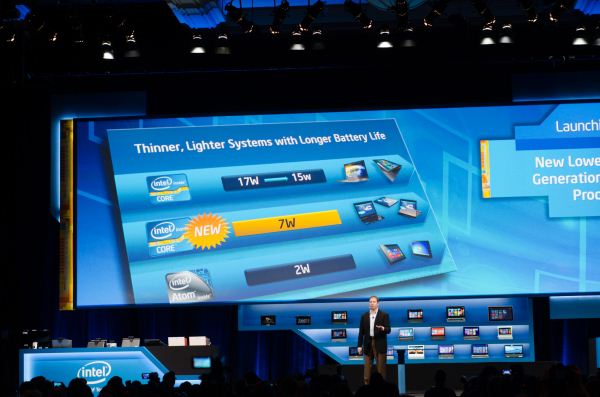



 Quote
Quote
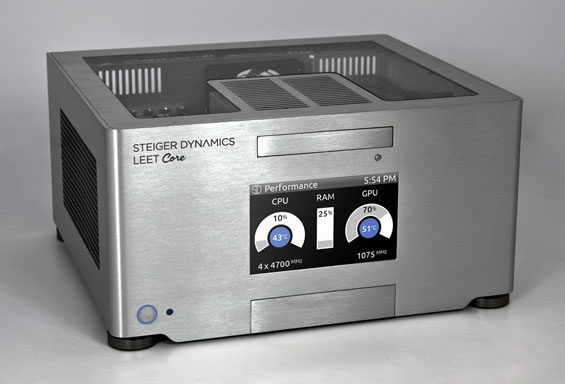
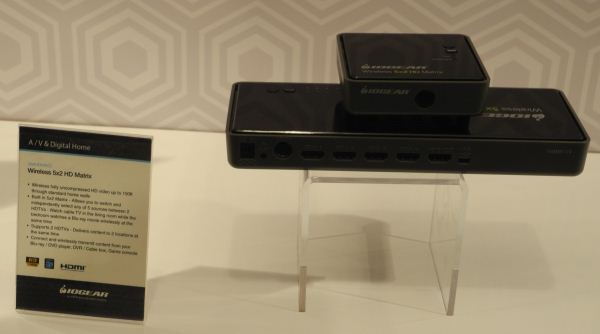
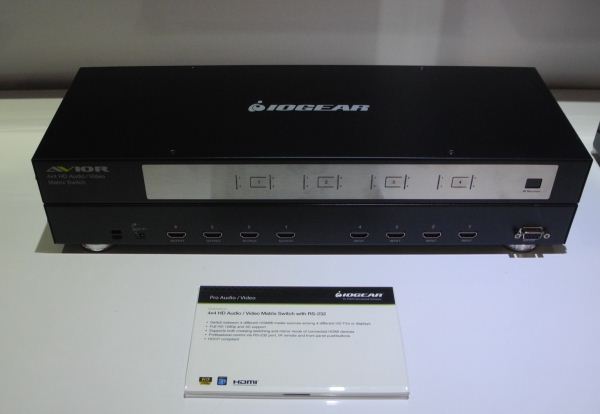





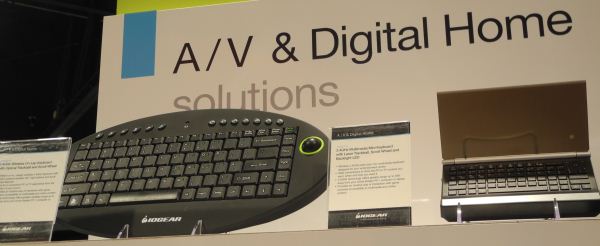





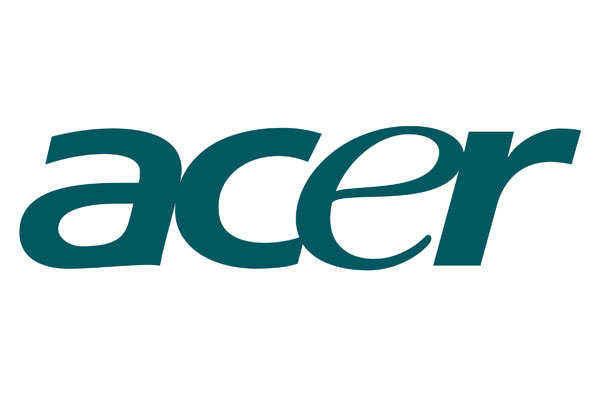
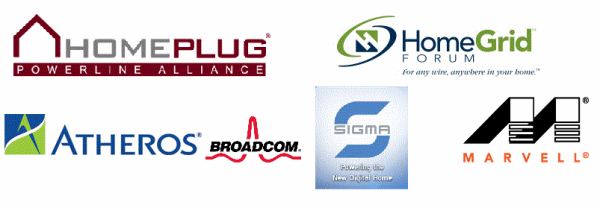


















Bookmarks